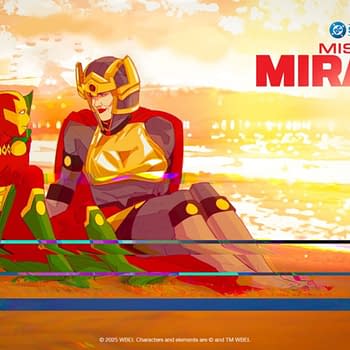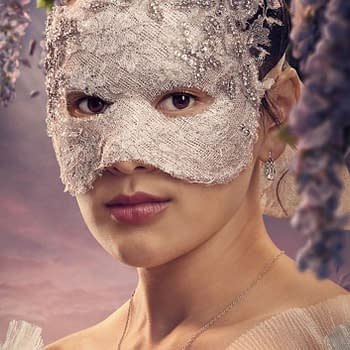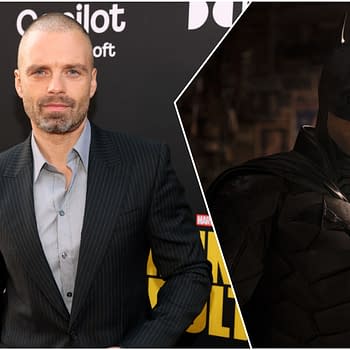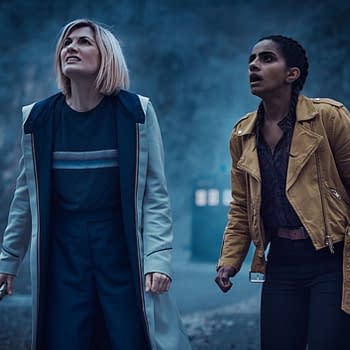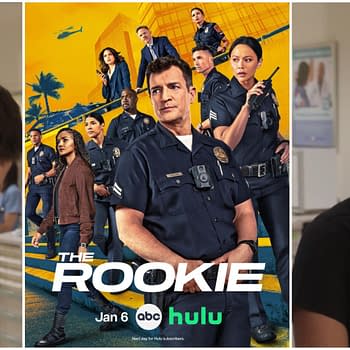Posted in: HBO, TV | Tagged: dune, dune: prophecy
Dune: Prophecy Production Designer on Offering an Immersive Experience
Dune: Prophecy production designer Tom Meyer spoke with Bleeding Cool about the ancient inspirations behind the immersive experiences.
Article Summary
- Dune: Prophecy production designer Tom Meyer shares how ancient history inspired the show’s immersive sets
- Sets were built on a massive scale to bring depth and realism, minimizing reliance on green screen and CGI
- Attention to architectural detail creates a world that feels lived in, with textures and history throughout
- Meyer describes how physical sets help actors engage more deeply with their environment and performances
When production designer Tom Meyer was recruited to work on the Dune franchise, starting with the prequel TV series from Alison Schapker and Diane Ademu-John, he went straight to work on being as meticulous as possible. While Meyer knows a thing or two about world-building, having worked on two DC films with Jonah Hex (2010) and Black Adam (2022), also for Warner Bros, it pales in comparison to the franchise started by Frank Herbert. Dune: Prophecy, based on Great Schools of Dune by Brian Herbert and Kevin J. Anderson, is set 10,000 years before the events of the 2021 film that centered on Timothée Chalamet's character Paul Altreides, follows sisters Valya (Emily Watson) and Tula Harkonnen (Olivia Williams) as they struggle to maintain the power and influence of the Sisterhood, and combat forces that threaten the future of humanity. Meyer spoke to Bleeding Cool about his most difficult sequence to design and the attention to detail in bringing the world to the actors as an immersive experience as possible.
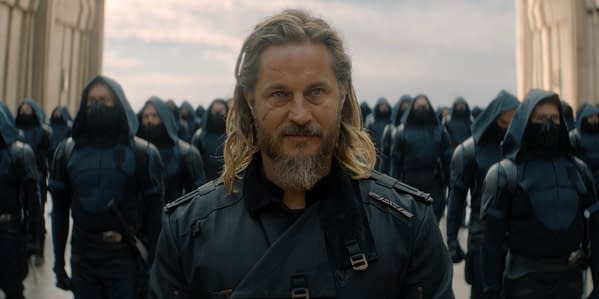
Dune: Prophecy Production Designer Tom Meyer on Bringing a "Sense of History" on Set
What was the most challenging sequence to plan out for season one?
The series's ambition was interesting; unlike a lot of science fiction that would rely heavily on blue screen or green screen, you know, CGI. The studio, executives, Alison, and Diane, everybody wanted this world to feel real. I know that seems like a cheeky thing to say, "What is the real world?" Everybody wants everything to feel real, but they wanted this world to have a sense of history, to feel like it just didn't come out of the sci-fi box and be all shiny and glossy from the ships, floors, and all this stuff.
They wanted to come through an area that had a sense of Roman or Egyptian history we could see, trace the history, and feel manufactured, not just the design of what we were doing, as far as giving it depth and a lot of detail. Both through architectural detail, but also set decoration, and the way space holds light to give it that depth, the stone that honed oil finish that had been touched a thousand times, but also in the scale in which we built.
I've done tentpole films, and this is as big or bigger than most tentpole films that I've done. We built everything in camera, filled up stage after stage, and built sets on backlots that were football pitches or multiple football pitches in size. We kept building, and I know it's something that when Michael [Szczurko] and Terron [Pratt], the VFX producers that we worked with, one of the things we wanted to make sure was that what's behind the actor is real. We're topping off and extending the world, but not trying to create the world from whole cloth, because the audience can smell that.
When you look at it, and it's one of the gratifying things, and why I feel so fortunate to have been nominated for an Emmy, is the audience saw the depth of that care and that realness in the execution of these designs. Even in the throne room, like we have the history there. There are statues of other characters in the books. The camera doesn't hone in on a plate that says, "The statue of Rayna Butler, Serena Butler, Manion, and the martyr." All these things or the paintings of the Corrino coordination, but by repeating that stuff, the audience starts to feel that embedded in that sense of history. It's the same thing; we don't have ionic or Corinthian columns, but we have ornate architecture, so you feel that depth. We didn't go for like the slick, clean walls and the harsh lights. We wanted to give something that we go, "Is that a real location? Did they go and dress a location? Is it a built set?" Blur that reality frame.
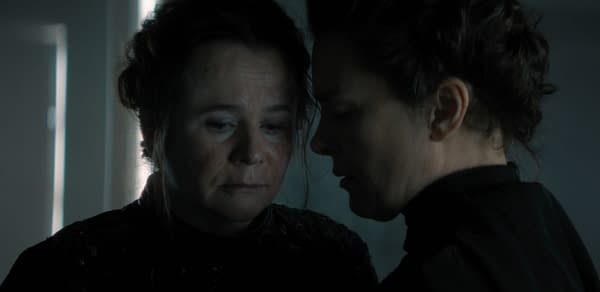
Were there things you had to scale back from season one, you would introduce in season two, because you have the space for it?
Definitely, I would say, would leave open doors, so to speak, that we knew what we could expand. That's exactly the excitement that I hope people will tune into in the second season: we've expanded those worlds and gone further in depth. Like everything, once you get to know the characters, story, and get more comfortable in that world, it gives you more freedom to explore.
It's the same as reading the books and researching; the more you know, the deeper you get involved. The more liberties and the deeper you get to explore. I go back to the scale of the sets, what we're building, and the worlds that we were doing. It wasn't building things for building's sake to make it crazier for ego. It was to give this verité, but I also think that one of the things that was also gratifying was when the actors came onto the sets.
They weren't coming on to a CG blue screen with just a floor and a bunch of curtains around them. They get to walk into these environments, and we do the same work here in the art department or in visual effects that I think the actors do as far as the backstory. We want to think, "What should be here?" The furniture, how has it been passed through the generations, the Harkonnens? How does it differentiate from the Corrinos? What are outcasts like the Harkonnens living on this ice planet? How's their world going to differ from these other worlds?
Creating that depth and history, the actors come on, they touch that fabric, they sit in those chairs, these huge halls, and they don't have to imagine or wonder where their eyelines are going. It's provided for them that I hope enriches their performances and gets them to a deeper spot. They're not worried about "What tennis ball am I looking at?" They're looking at the history before them.
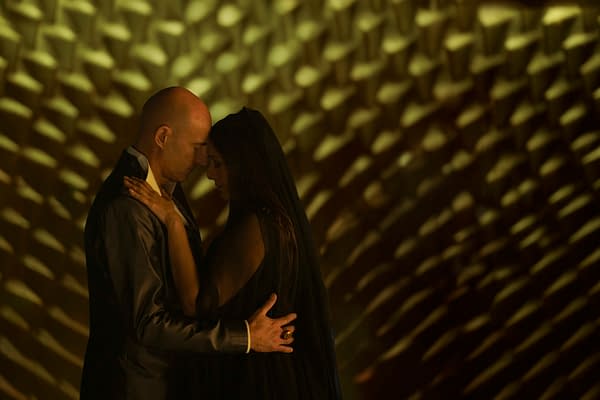
Season one of Dune: Prophecy, which also stars Travis Fimmel, Jodhi May, Sarah-Sofie Boussnina, Chloe Lea, Chris Mason, Shalom Brune-Franklin, Mark Strong, Jade Anouka, Edward Davis, Josh Heuston, Faoileann Cunningham, Aoife Hinds, and Mark Addy, is available on HBO Max, and season two is underway.







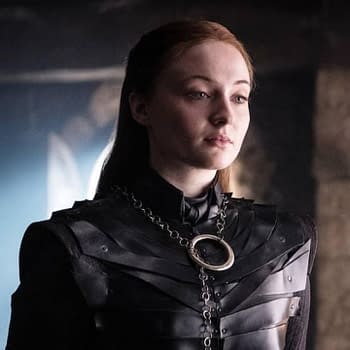



![Stranger Things: Lingering Questions Following the Finale [SPOILERS]](https://mlpnk72yciwc.i.optimole.com/cqhiHLc.IIZS~2ef73/w:350/h:350/q:75/rt:fill/g:ce/https://bleedingcool.com/wp-content/uploads/2026/01/StrangerThings_S5_0728_R.jpg)
